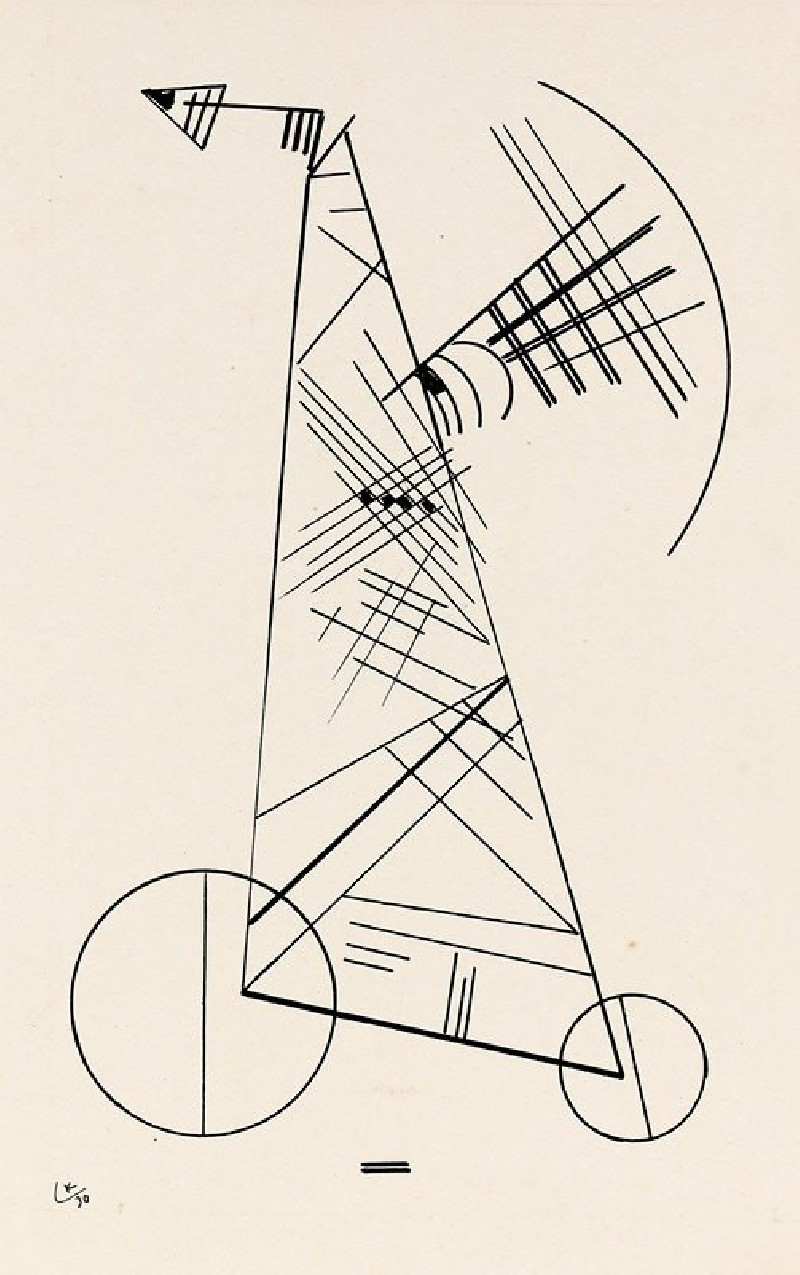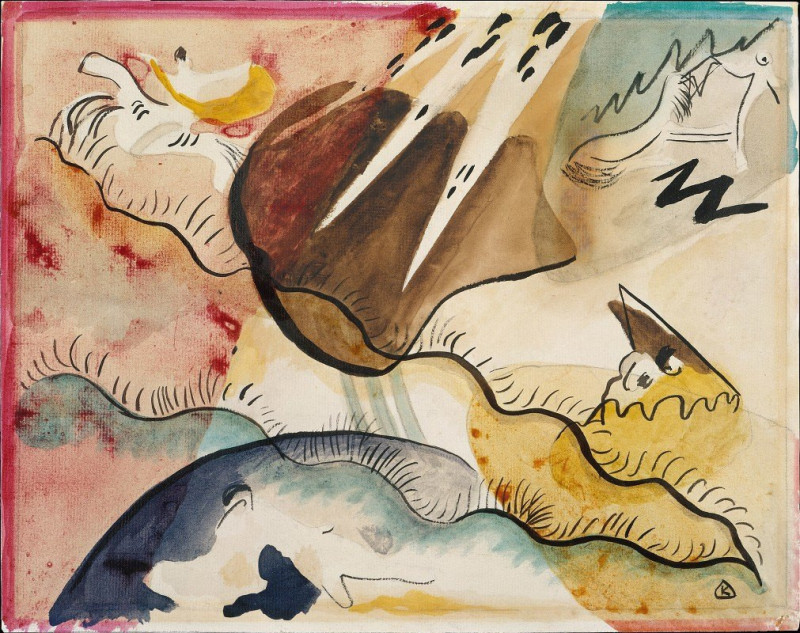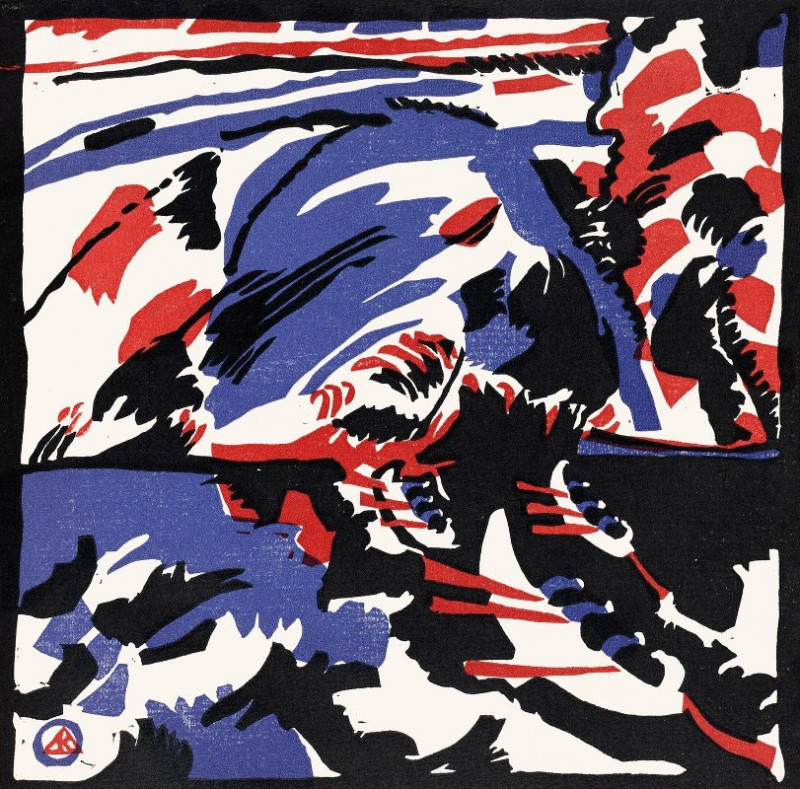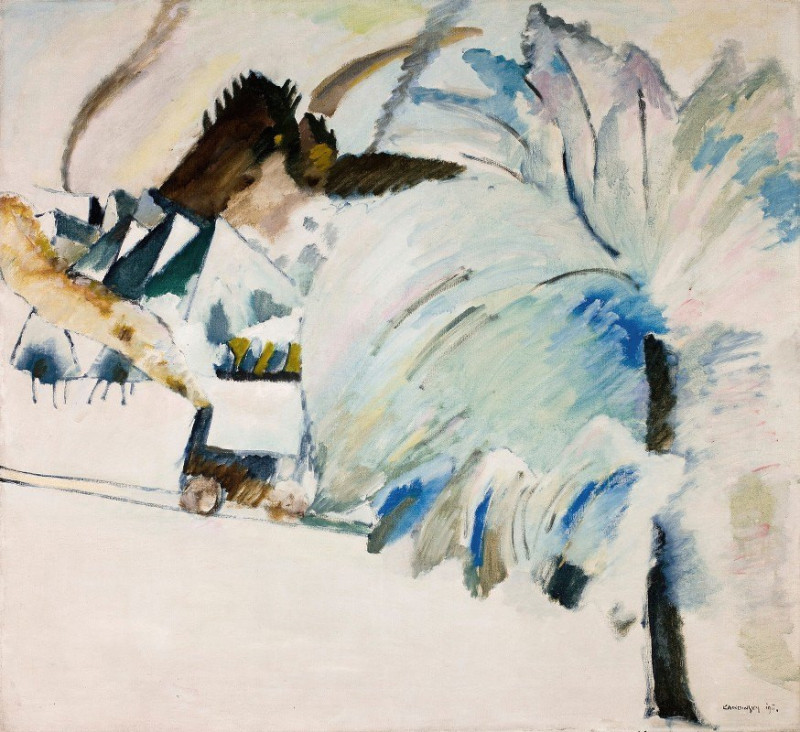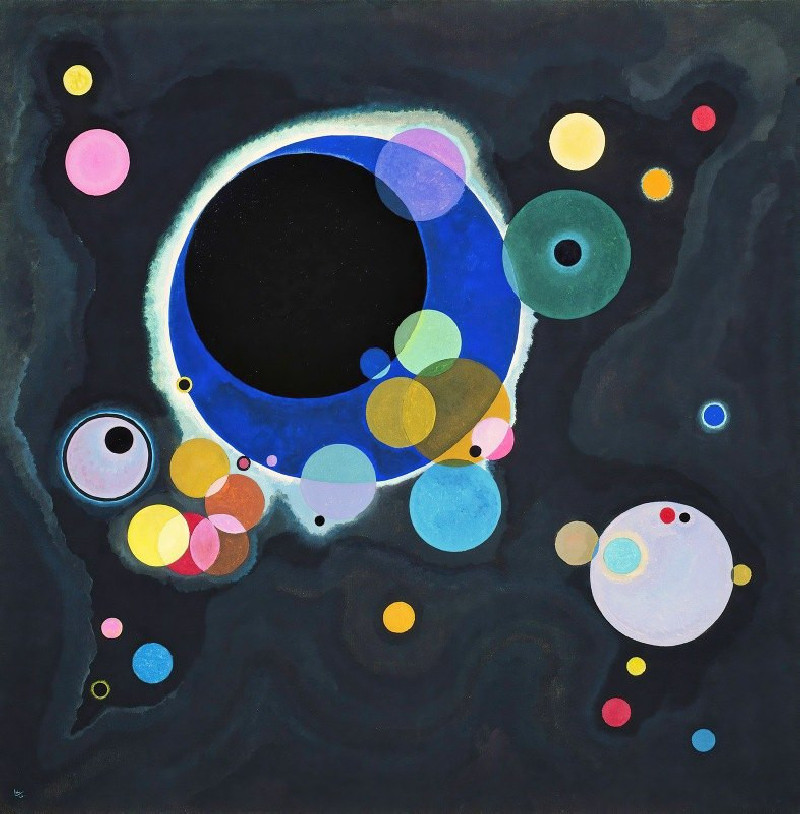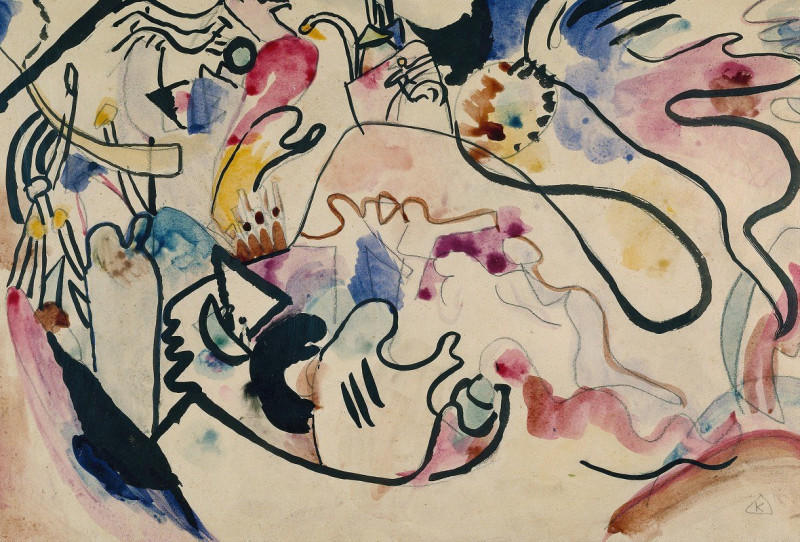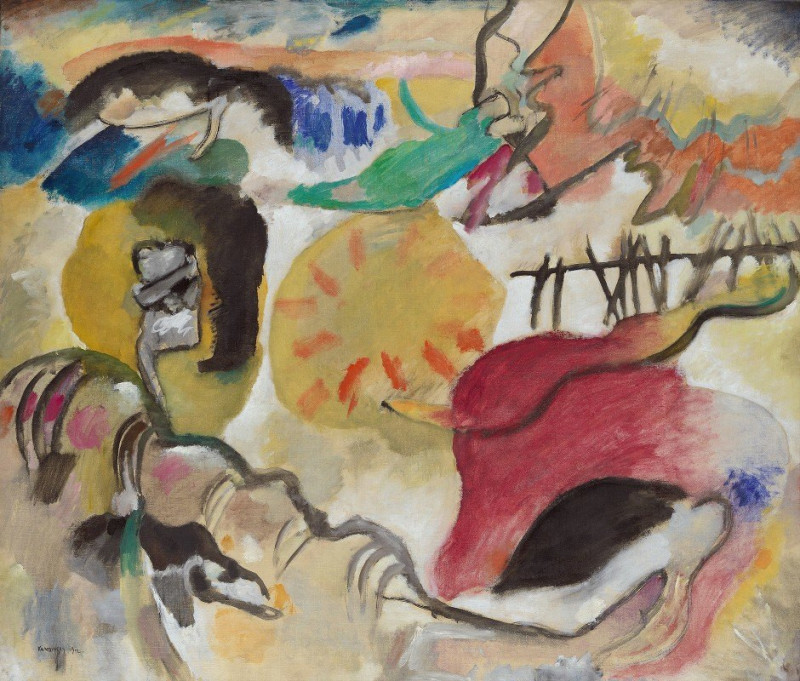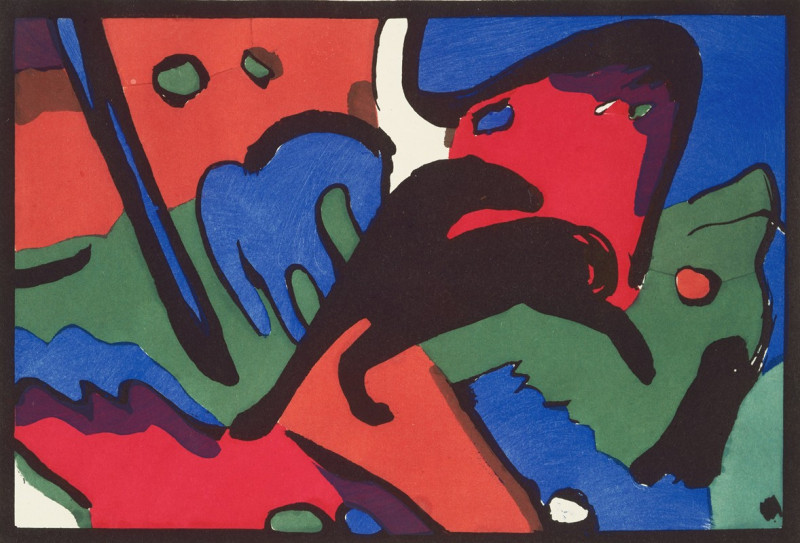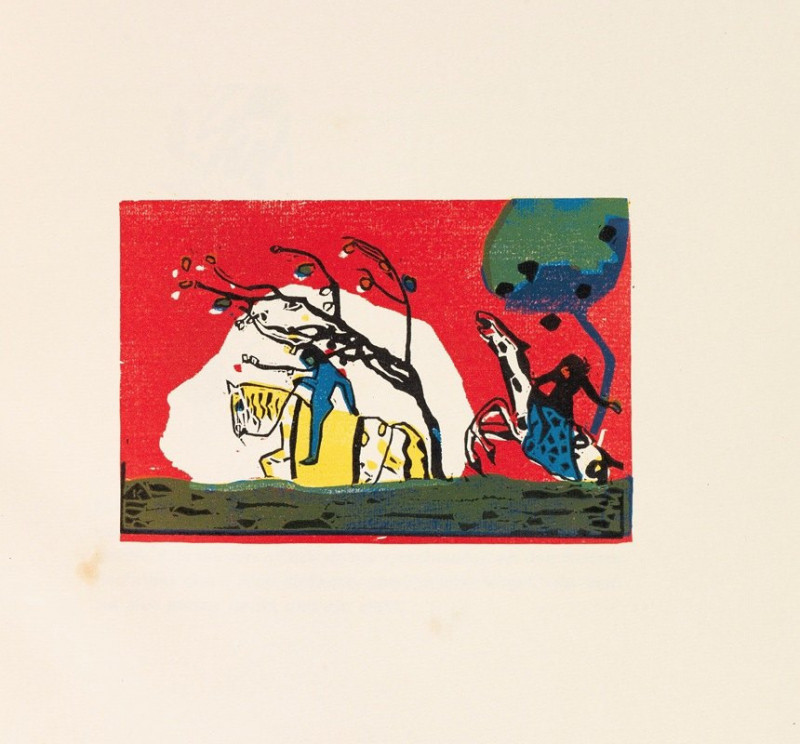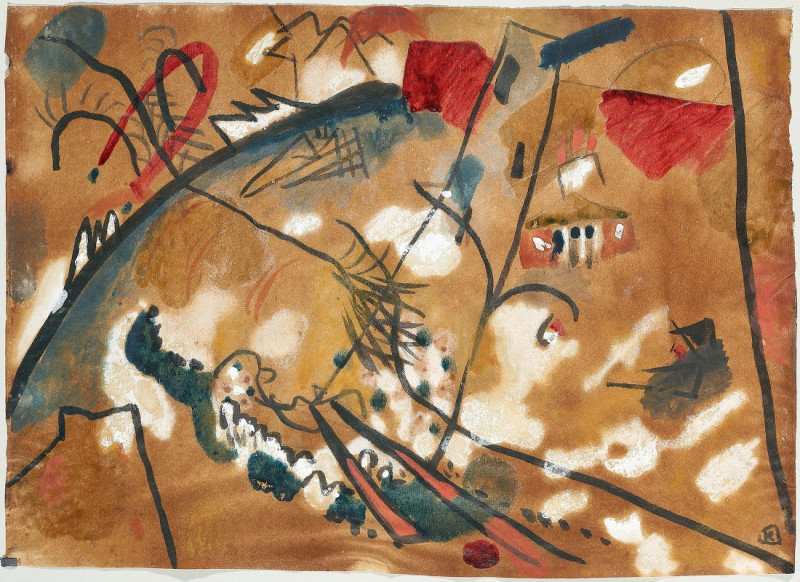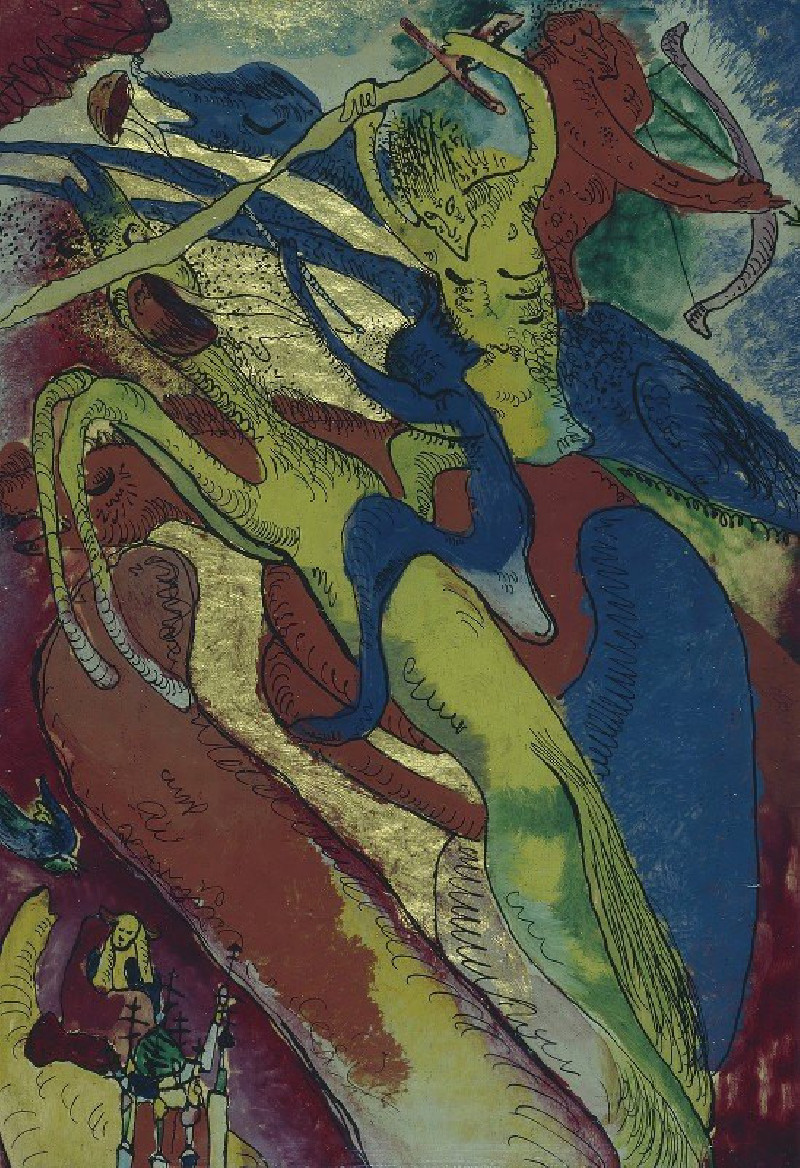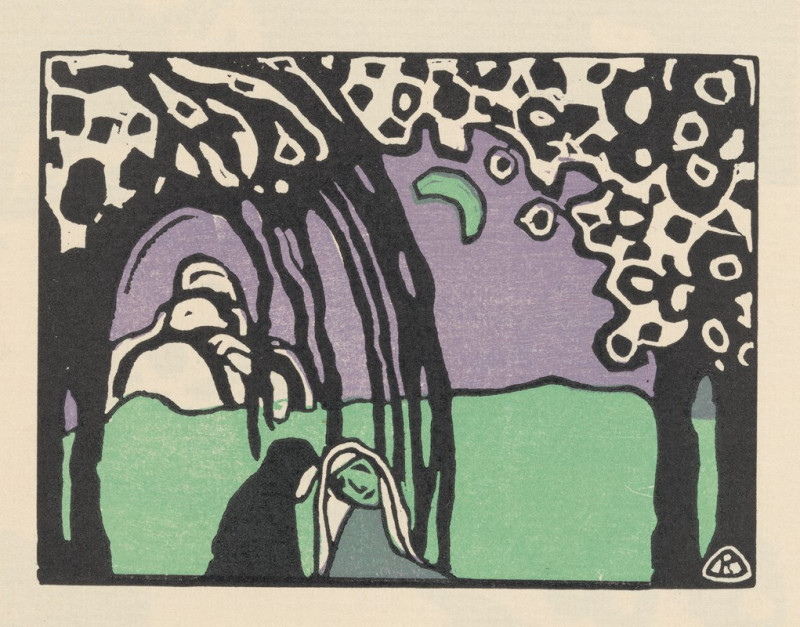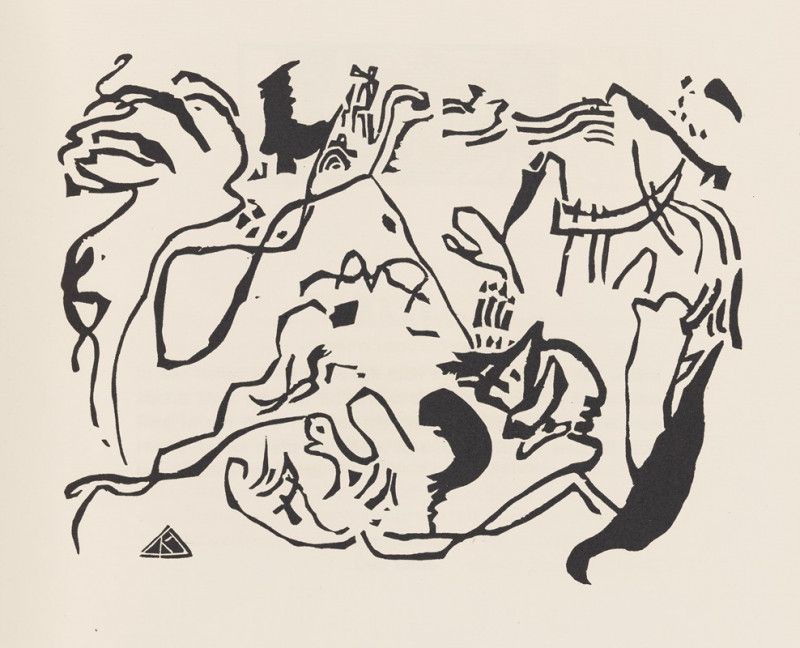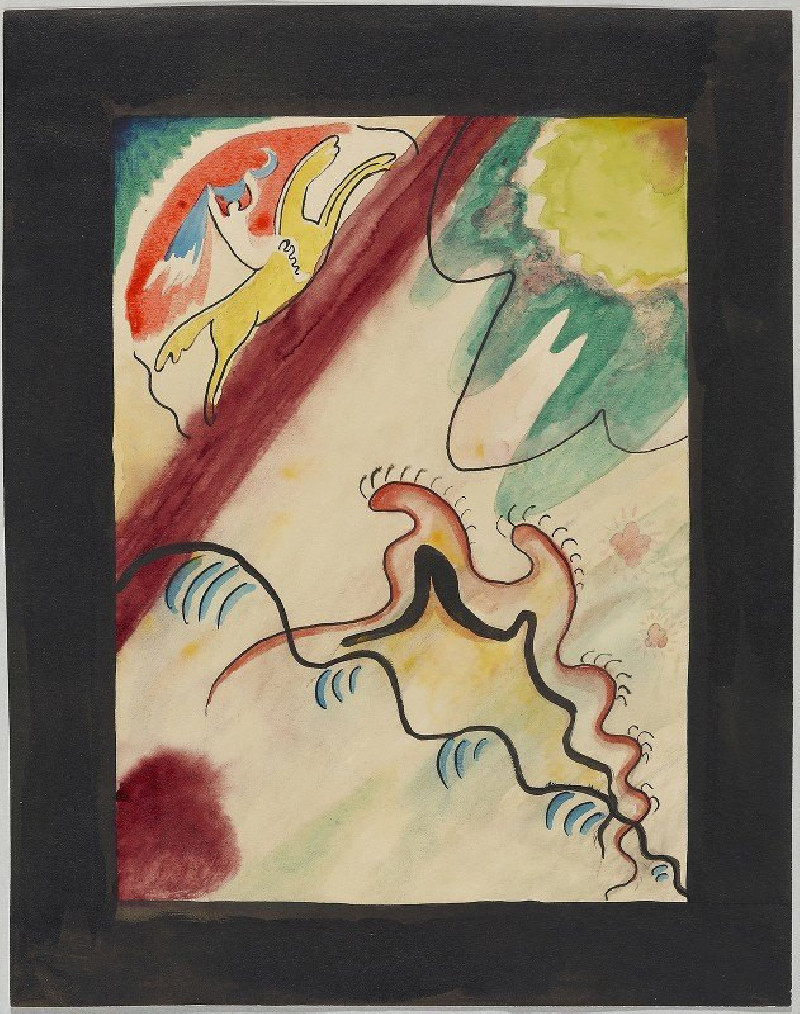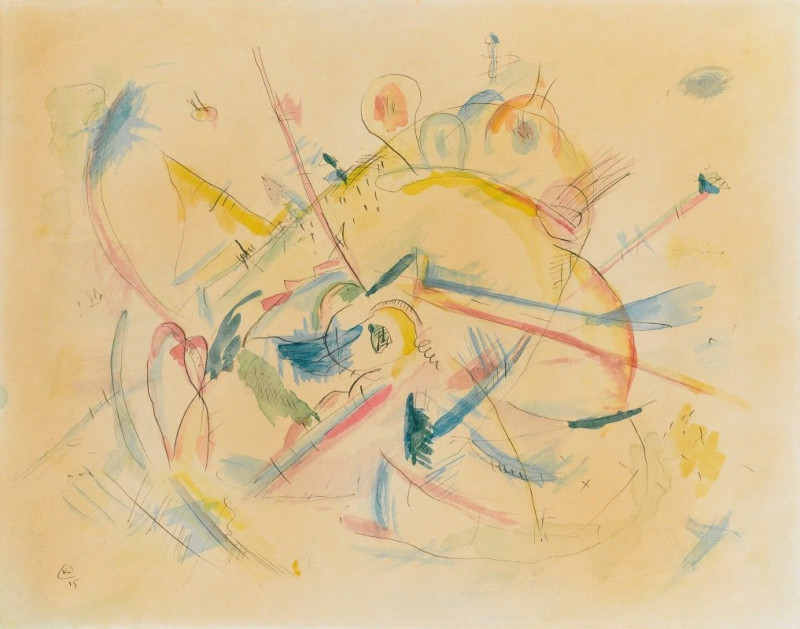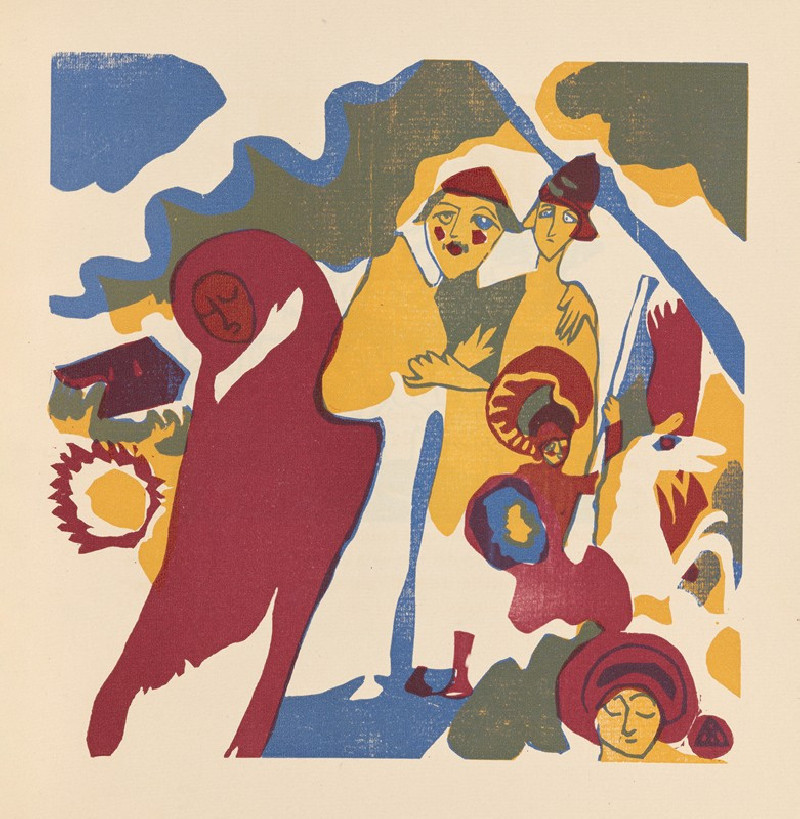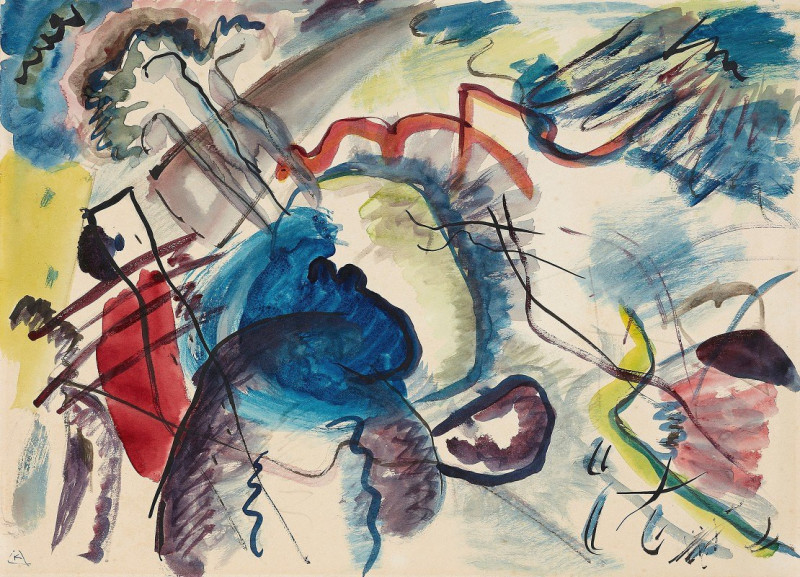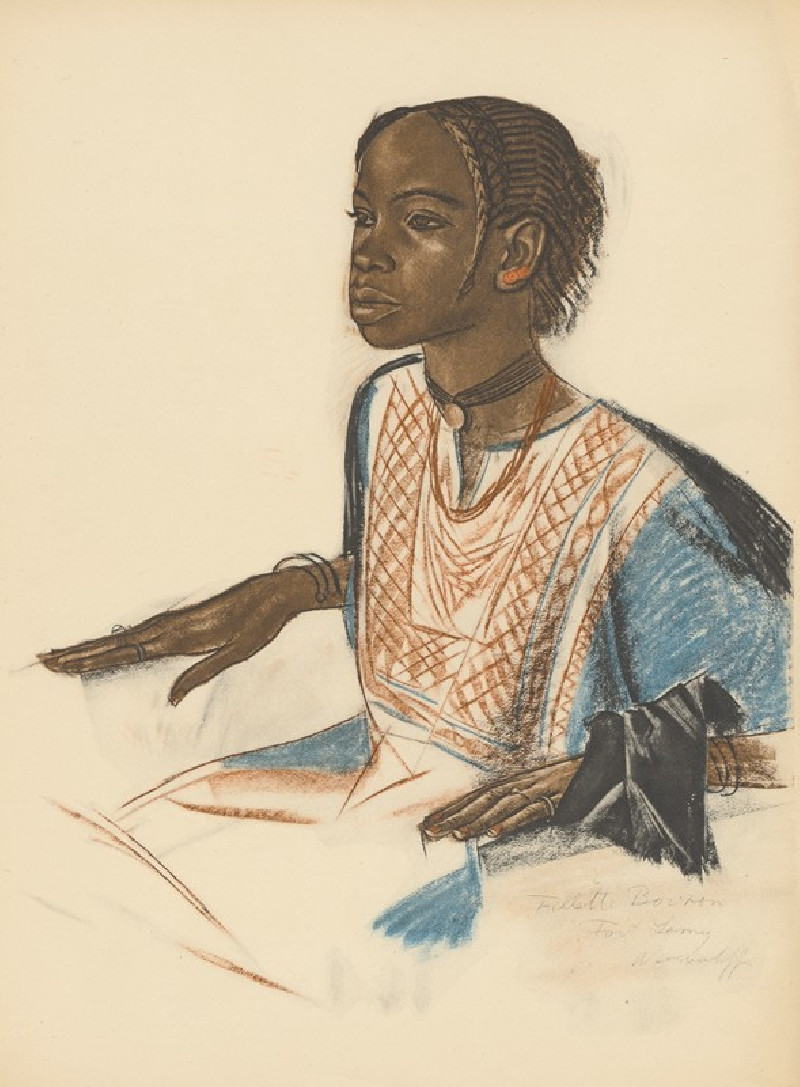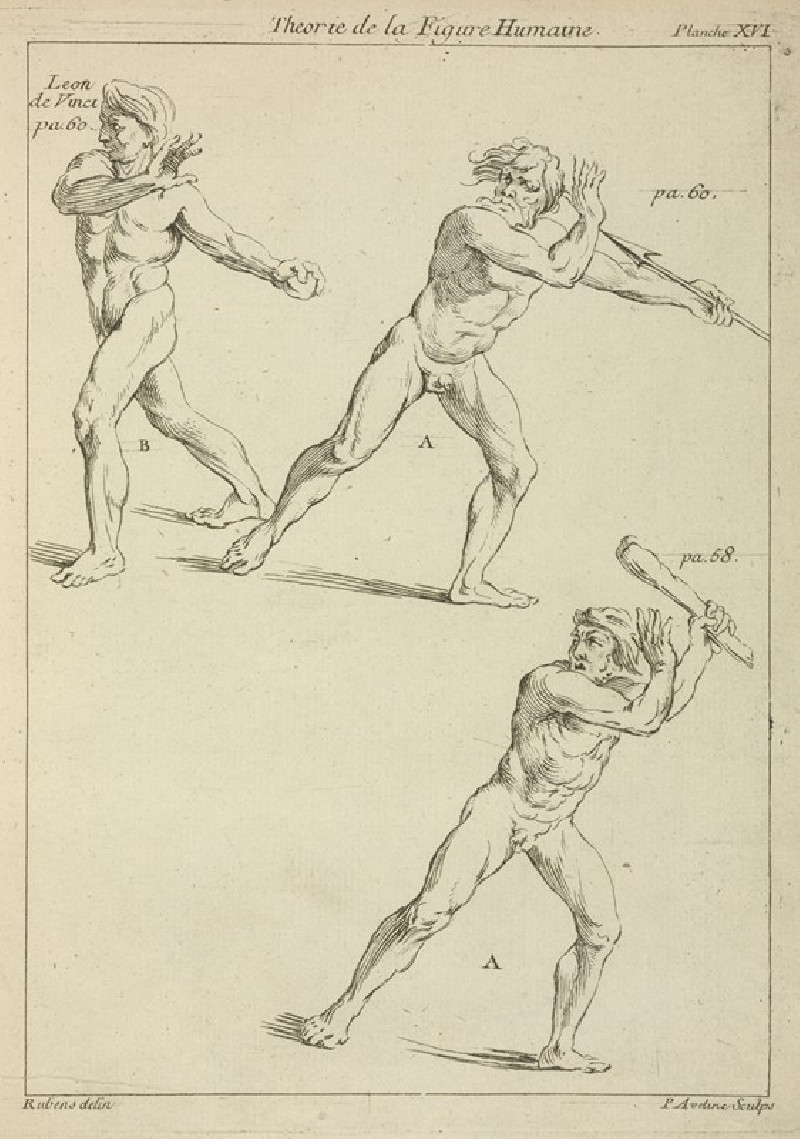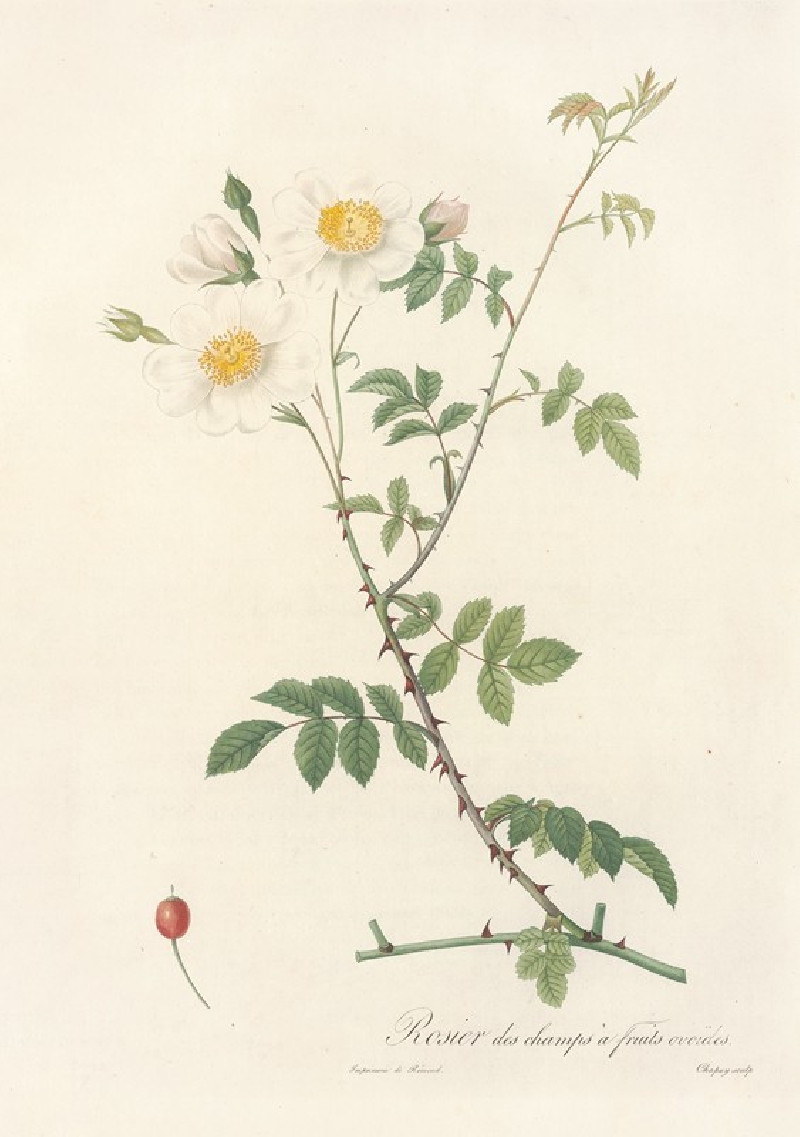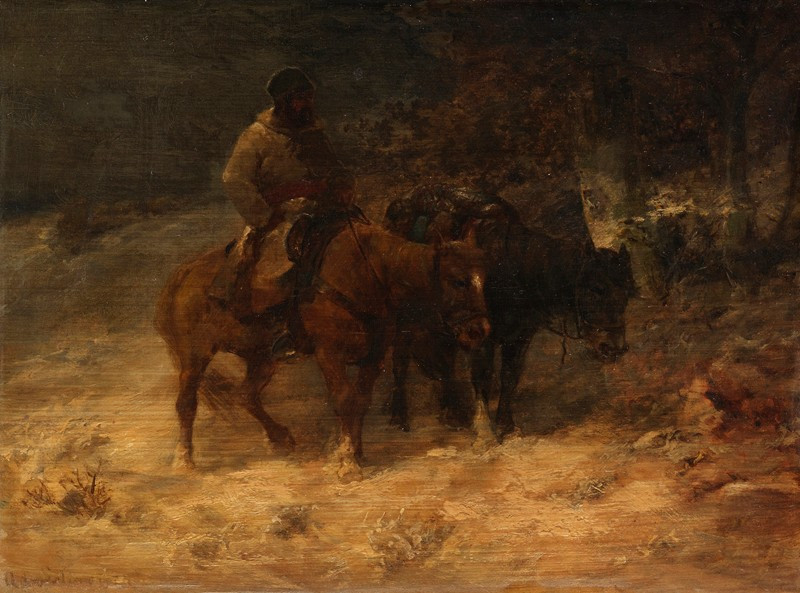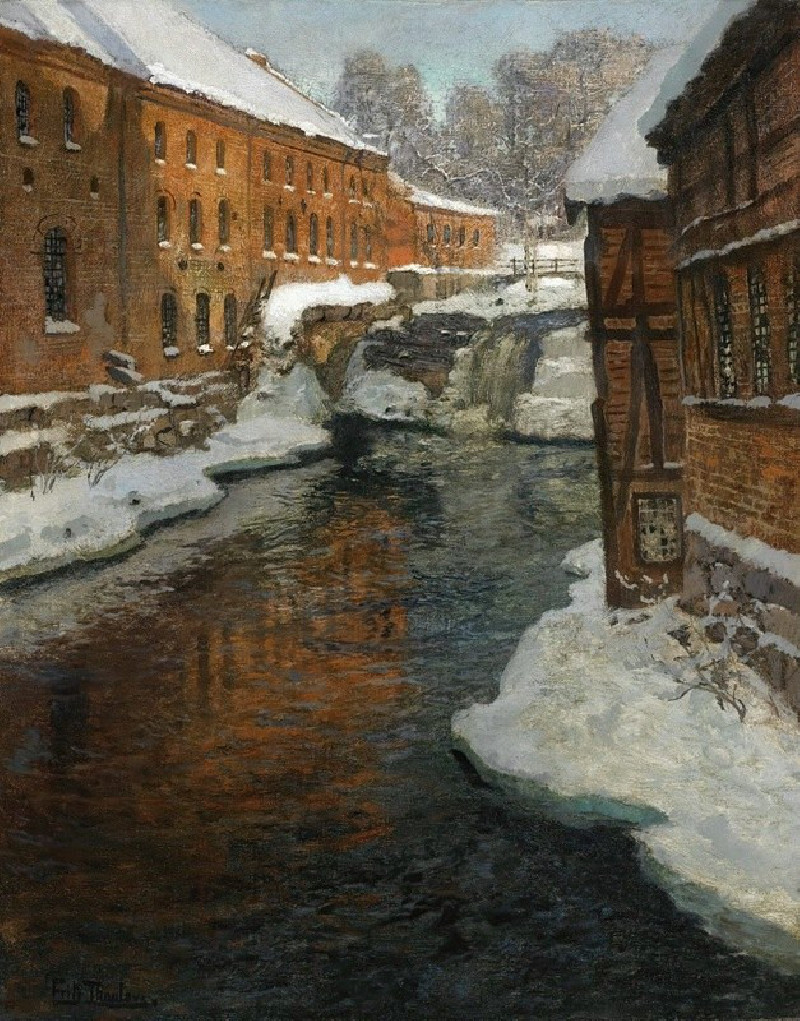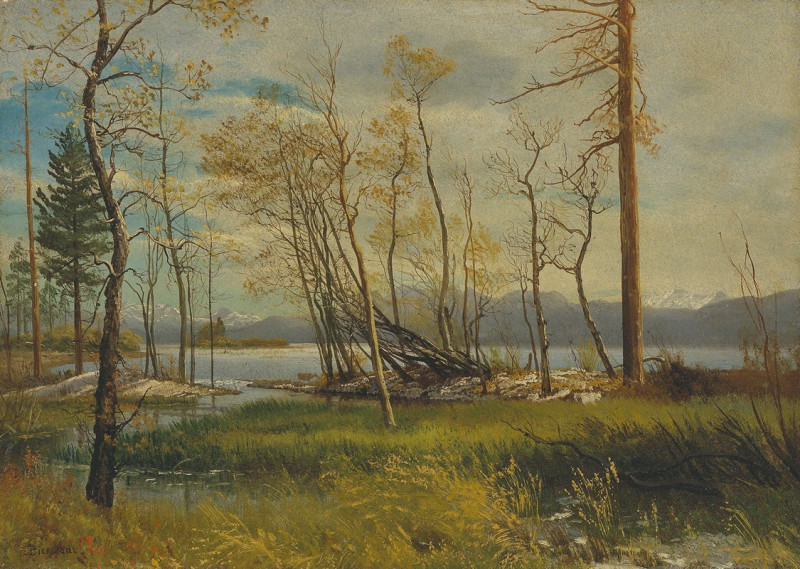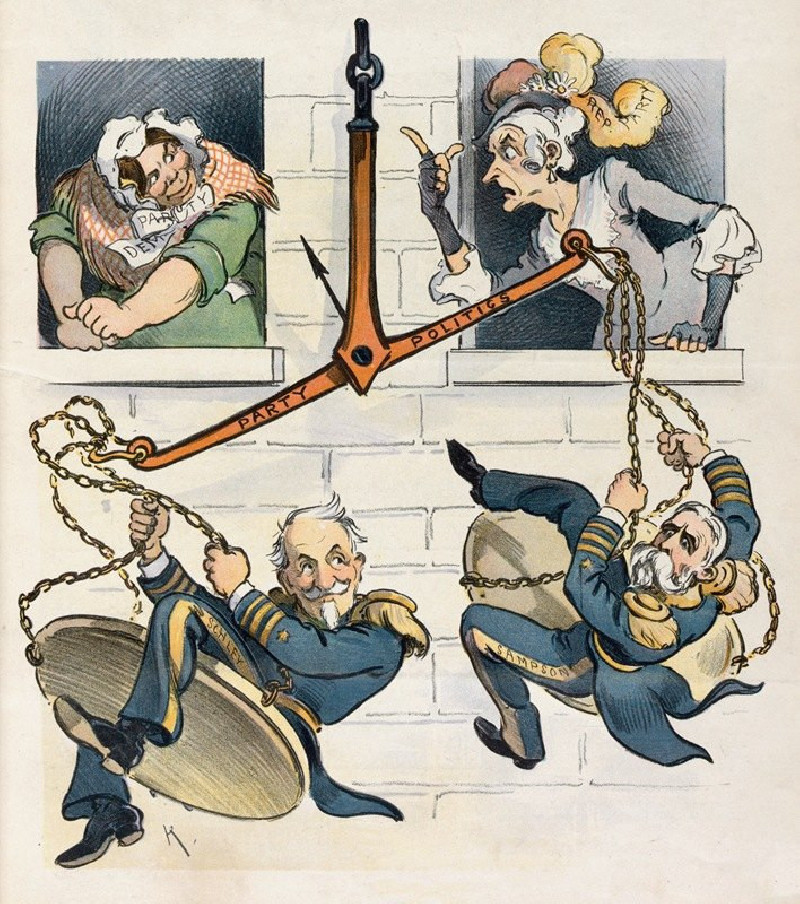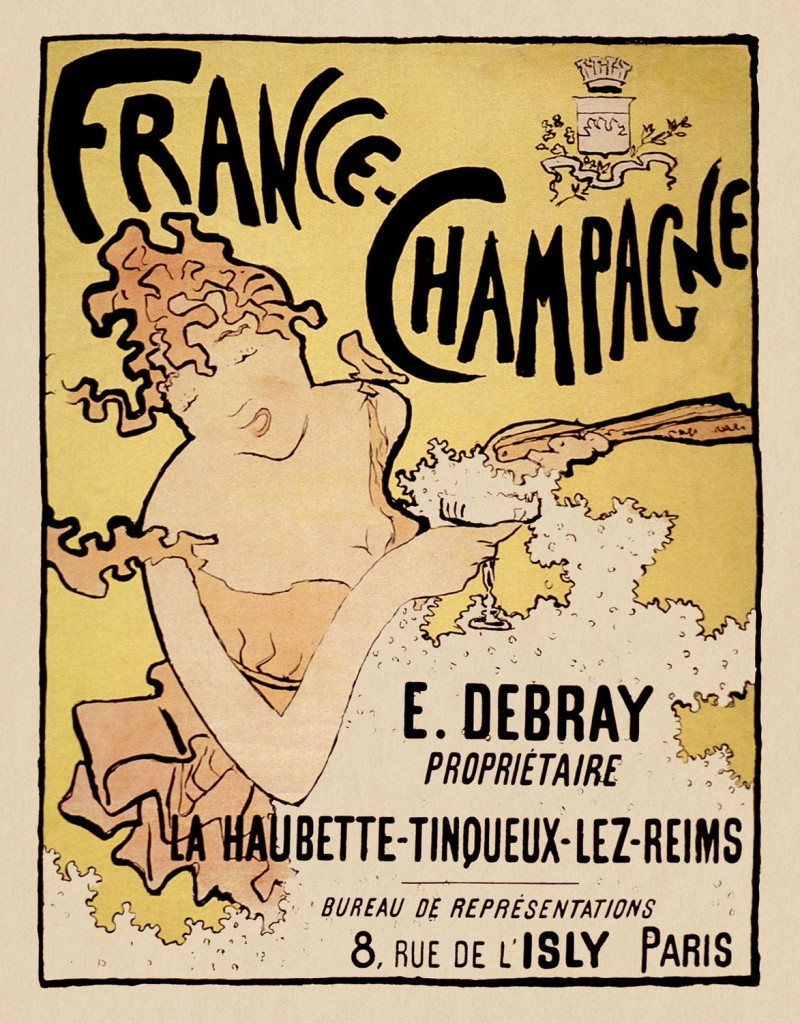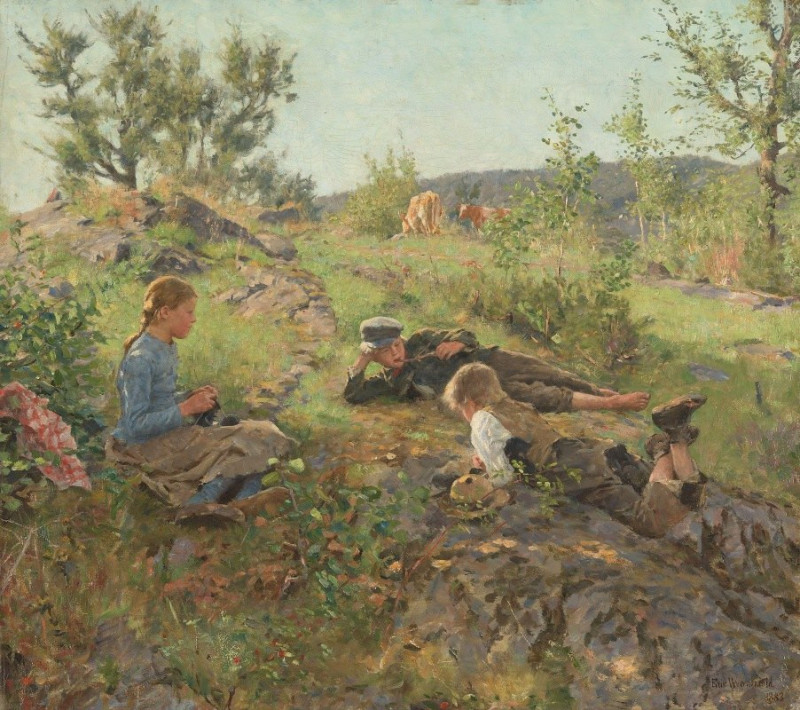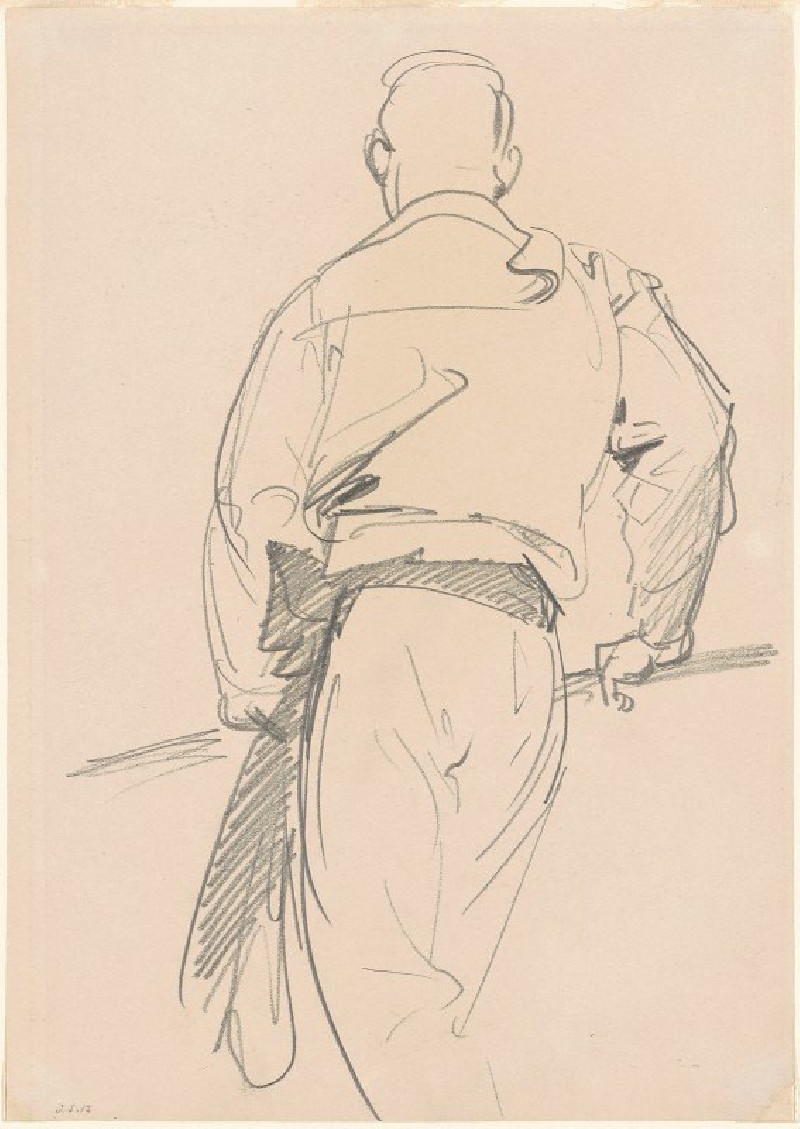Klänge Pl.09 (1913)
Technique: Giclée quality print
Recommended by our customers
More about this artwork
Klänge Pl.09 (1913) by Wassily Kandinsky is a fascinating work, showcasing the artist's exploration of abstract forms and the integration of graphic art with thematic complexity. In this print, we perceive an intriguing composition of bold black shapes against a flat white background, offering both stark contrast and dynamic balance.One can observe forms that seem to float freely yet are interconnected through an almost musical rhythm, hinting at Kandinsky’s keen interest in the relationship between art and music; 'Klänge' in German translates to 'Sounds'. The shapes within the artwork could be interpreted as abstract representations of various elements or symbols that evoke a sense of motion and emotion, typical of Kandinsky’s works.Elements within the painting hint at figural components, like sweeping curves and tangled lines which could resemble parts of musical instruments, human or fantastical creatures, perhaps playing with the notion of synesthesia – a theme Kandinsky was deeply interested in. Each viewer might see different images or "sounds" within this intricate dance of shapes, contributing to the piece’s open-ended interpretation and its appeal as a deeply personal experience.Kandinsky's use of sharp contrasts and organic forms plays with the observer's perception and invites them to delve into an almost dreamlike state where sight and sound converge, defining early abstract art's profound and lasting impact.
Delivery
Returns
Wassily Wassilyevich Kandinsky was a Russian painter and art theorist. Kandinsky is generally credited as the pioneer of abstract art. Born in Moscow, Kandinsky spent his childhood in Odessa, where he graduated at Grekov Odessa Art school. He enrolled at the University of Moscow, studying law and economics. Successful in his profession—he was offered a professorship (chair of Roman Law) at the University of Dorpat today Tartu, Estonia)—Kandinsky began painting studies (life-drawing, sketching and anatomy) at the age of 30.



